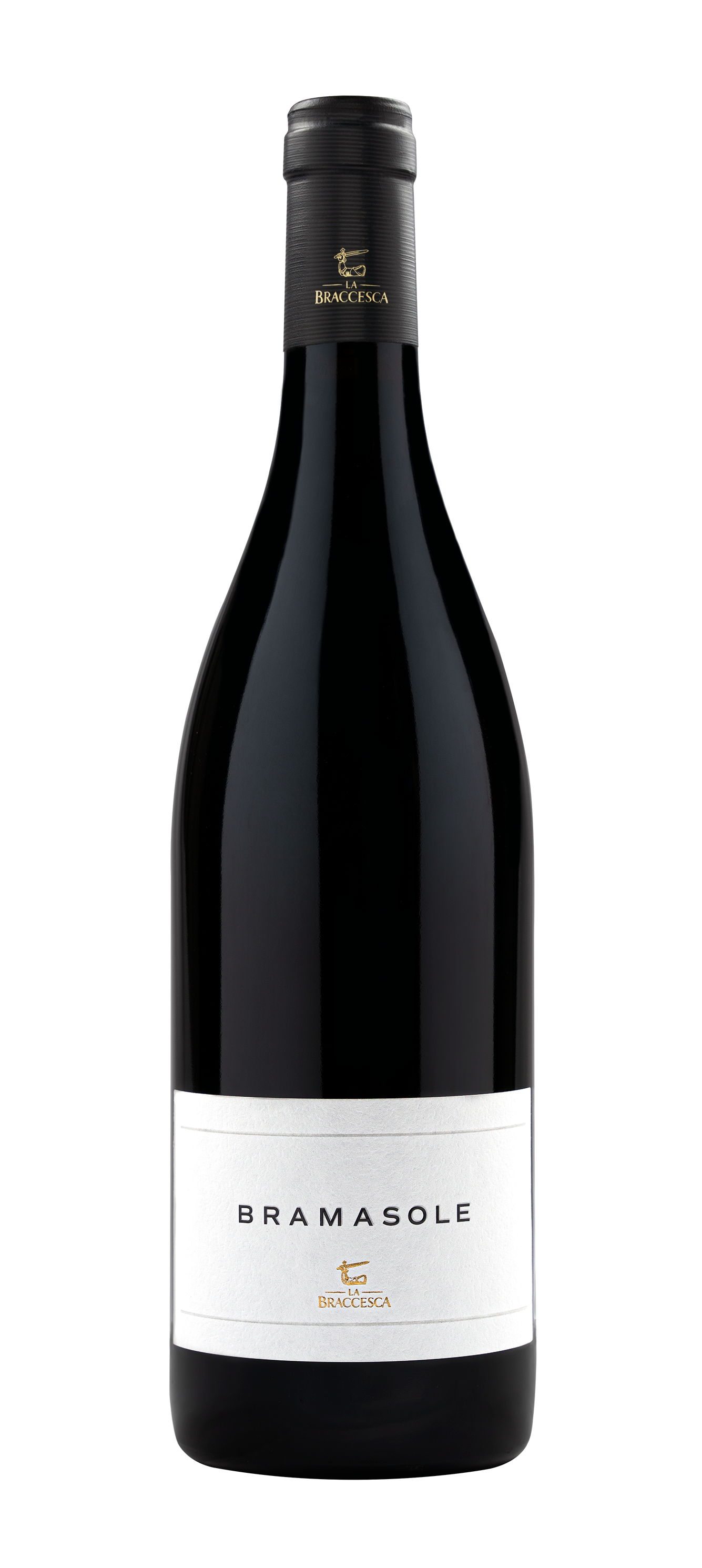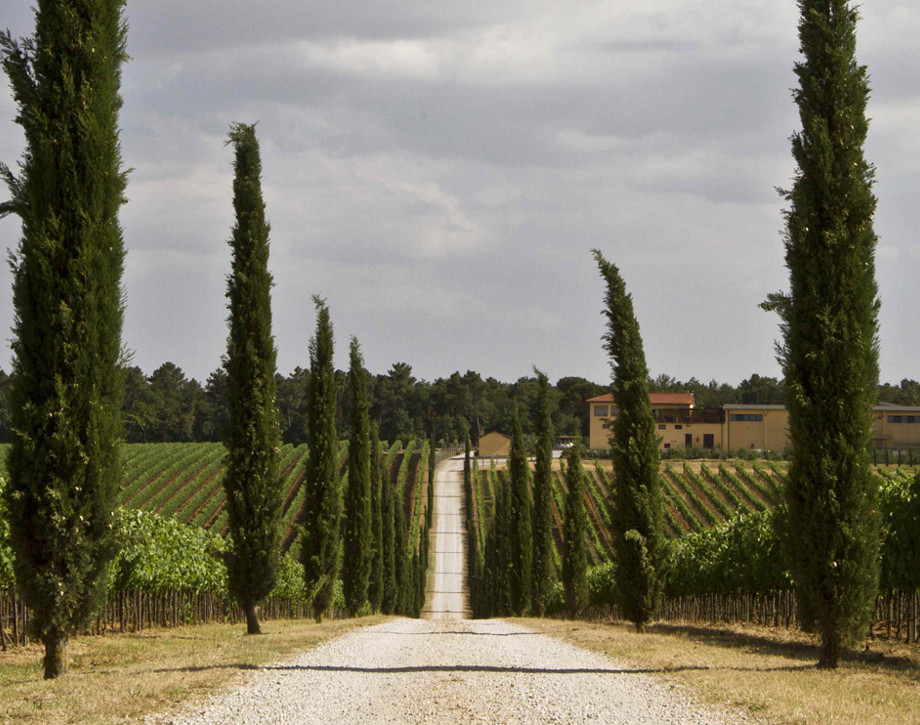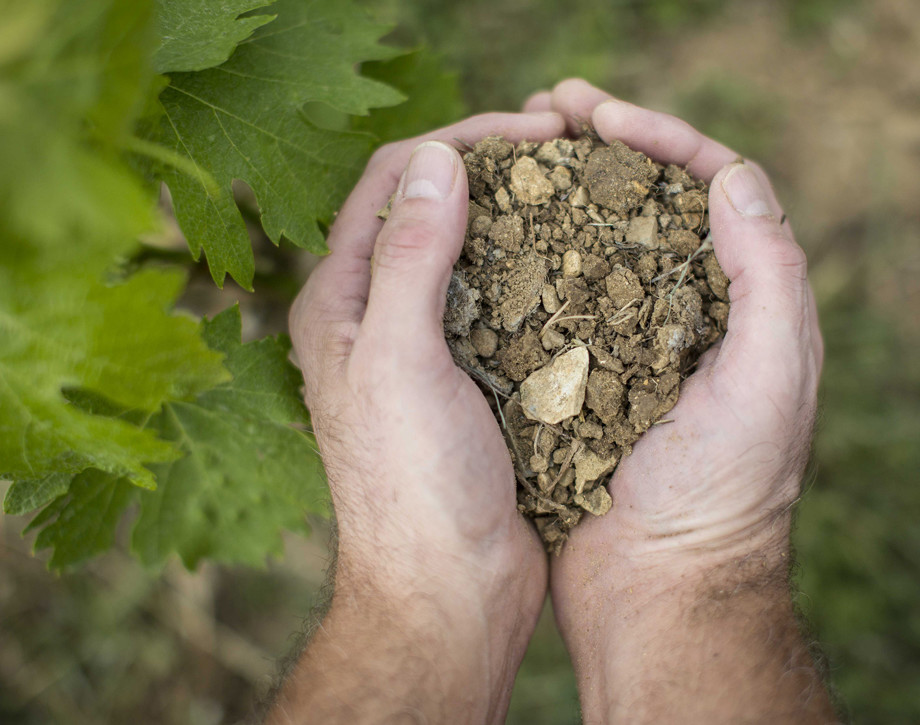Bramasole

Climate
The beginning of the 2019 growing season was defined by dry winter weather with temperatures that were lower than seasonal averages. Spring saw repeated rain showers, especially during the month of April, and temperatures remained unseasonably cool resulting in a delay in grapevine development. The summer months brought higher than average temperatures allowing the vines to make up for the initial delay and begin the ripening phase in optimal conditions. At harvest time, grapes were perfectly healthy although berries were slightly smaller than usual. Harvesting operations for Bramasole began on September 18th.
Vinification
Upon arrival in the cellar, harvested grapes were destemmed and gently crushed. The must was transferred into stainless steel tanks and underwent alcoholic fermentation at a controlled temperature 28 °C (82 °F). Maceration on the skins took place over a period of approximately 15 days with gentle mechanical techniques to favor the extraction of aromatic compounds and supple, non-astringent tannins. The wine was transferred into second fill French oak barriques where malolactic fermentation took place, followed by a period of aging of about 12 months in both new and second fill oak. Bramasole was bottled in spring 2021.
Historical Data
The estate’s name comes from the historical farm that once stood there, owned by the Count of Bracci, whose coat of arms appears on the estate’s logo; an arm covered with armor brandishing a sword. The property extends over an area of 508 hectares (1255 acres) and the vineyards cover an area of 340 hectares (840 acres) divided into two blocks: the first is 366 hectares (904 acres) of which 237 (585 acres) are planted with vineyards and is located on the border between the cities of Montepulciano and Cortona. The other block is 142 hectares (350 acres) of which 103 (254 acres) are planted with vineyards, it extends all the way to Montepulciano encompassing three of the most famous parcels of land known for the production of great red wines: Cervognano, Santa Pia and Gracciano. Bramasole is made from the sunniest part of the vineyard in one of Cortona’s best areas for the production of premium quality Syrah. Bramasole is a wine able to evolve over time and reflect this territory and its long-standing winemaking traditions using a new untraditional variety. Bramasole’s first vintage was 2000.
Tasting Notes
Bramasole 2019 is an intense ruby red color. The nose presents aromas typical of this grape variety especially pepper, licorice, and floral hints of violets. The complex bouquet is completed by notes of vanilla, coffee and coconut accompanied by spicy undertones. The rich, elegant palate delivers velvety, supple tannins. A long, persistent finish is characterized by a pleasant aftertaste that echo the aromas of vanilla and licorice perceived on the nose.

The Wine
Bramasole is made from the sunniest part of the vineyard, from the Antinori family’s innovative spirit and from one of Cortona’s best areas for producing premium quality Syrah. Bramasole is a wine able to evolve over time and reflect this territory and its long-standing winemaking traditions using a new untraditional variety. The first vintage to be produced was the 2000 vintage.

Climate
The beginning of the 2019 growing season was defined by dry winter weather with temperatures that were lower than seasonal averages. Spring saw repeated rain showers, especially during the month of April, and temperatures remained unseasonably cool resulting in a delay in grapevine development. The summer months brought higher than average temperatures allowing the vines to make up for the initial delay and begin the ripening phase in optimal conditions. At harvest time, grapes were perfectly healthy although berries were slightly smaller than usual. Harvesting operations for Bramasole began on September 18th.
Vinification
Upon arrival in the cellar, harvested grapes were destemmed and gently crushed. The must was transferred into stainless steel tanks and underwent alcoholic fermentation at a controlled temperature 28 °C (82 °F). Maceration on the skins took place over a period of approximately 15 days with gentle mechanical techniques to favor the extraction of aromatic compounds and supple, non-astringent tannins. The wine was transferred into second fill French oak barriques where malolactic fermentation took place, followed by a period of aging of about 12 months in both new and second fill oak. Bramasole was bottled in spring 2021.
Historical Data
The estate’s name comes from the historical farm that once stood there, owned by the Count of Bracci, whose coat of arms appears on the estate’s logo; an arm covered with armor brandishing a sword. The property extends over an area of 508 hectares (1255 acres) and the vineyards cover an area of 340 hectares (840 acres) divided into two blocks: the first is 366 hectares (904 acres) of which 237 (585 acres) are planted with vineyards and is located on the border between the cities of Montepulciano and Cortona. The other block is 142 hectares (350 acres) of which 103 (254 acres) are planted with vineyards, it extends all the way to Montepulciano encompassing three of the most famous parcels of land known for the production of great red wines: Cervognano, Santa Pia and Gracciano. Bramasole is made from the sunniest part of the vineyard in one of Cortona’s best areas for the production of premium quality Syrah. Bramasole is a wine able to evolve over time and reflect this territory and its long-standing winemaking traditions using a new untraditional variety. Bramasole’s first vintage was 2000.
Tasting Notes
Bramasole 2019 is an intense ruby red color. The nose presents aromas typical of this grape variety especially pepper, licorice, and floral hints of violets. The complex bouquet is completed by notes of vanilla, coffee and coconut accompanied by spicy undertones. The rich, elegant palate delivers velvety, supple tannins. A long, persistent finish is characterized by a pleasant aftertaste that echo the aromas of vanilla and licorice perceived on the nose.

Tenuta La Braccesca
The estate’s name comes from the historical farm that once stood there, owned by the Count of Bracci, whose coat of arms appears on the estate’s logo; an arm covered with armor brandishing a sword. Marchesi Antinori acquired the estate in 1990. The property extends over an area of 508 hectares (1255 acres) and the vineyards cover an area of 340 hectares (840 acres) divided into two blocks: the first is 366 hectares (904 acres) of which 237 (585 acres) are planted with vineyards and is located on the border between the cities of Montepulciano and Cortona. The other block is 142 hectares (350 acres) of which 103 (254 acres) are planted with vineyards, it extends all the way to Montepulciano encompassing three of the most famous parcels of land known for the production of great red wines: Cervognano, Santa Pia and Gracciano.

Soil
Clay loam
















